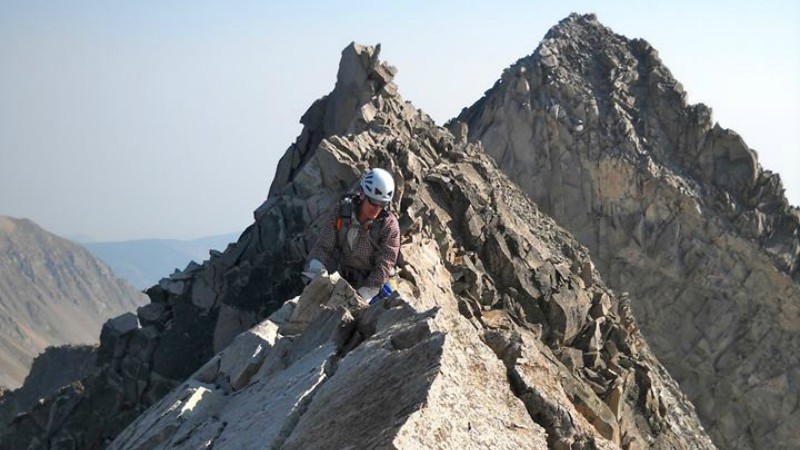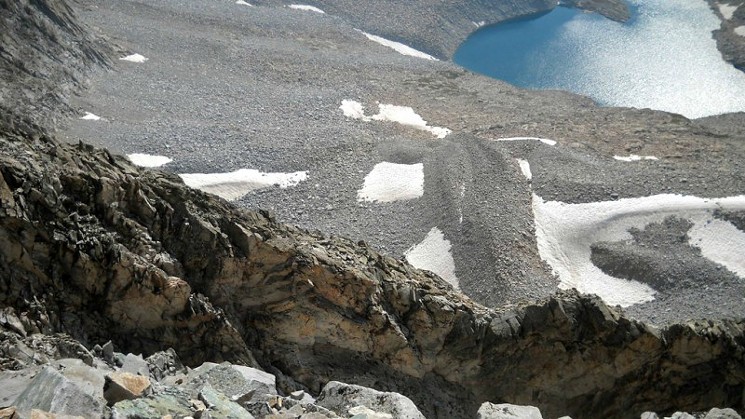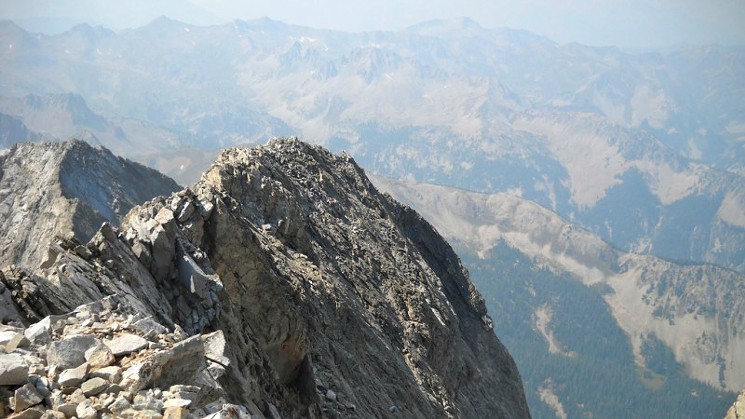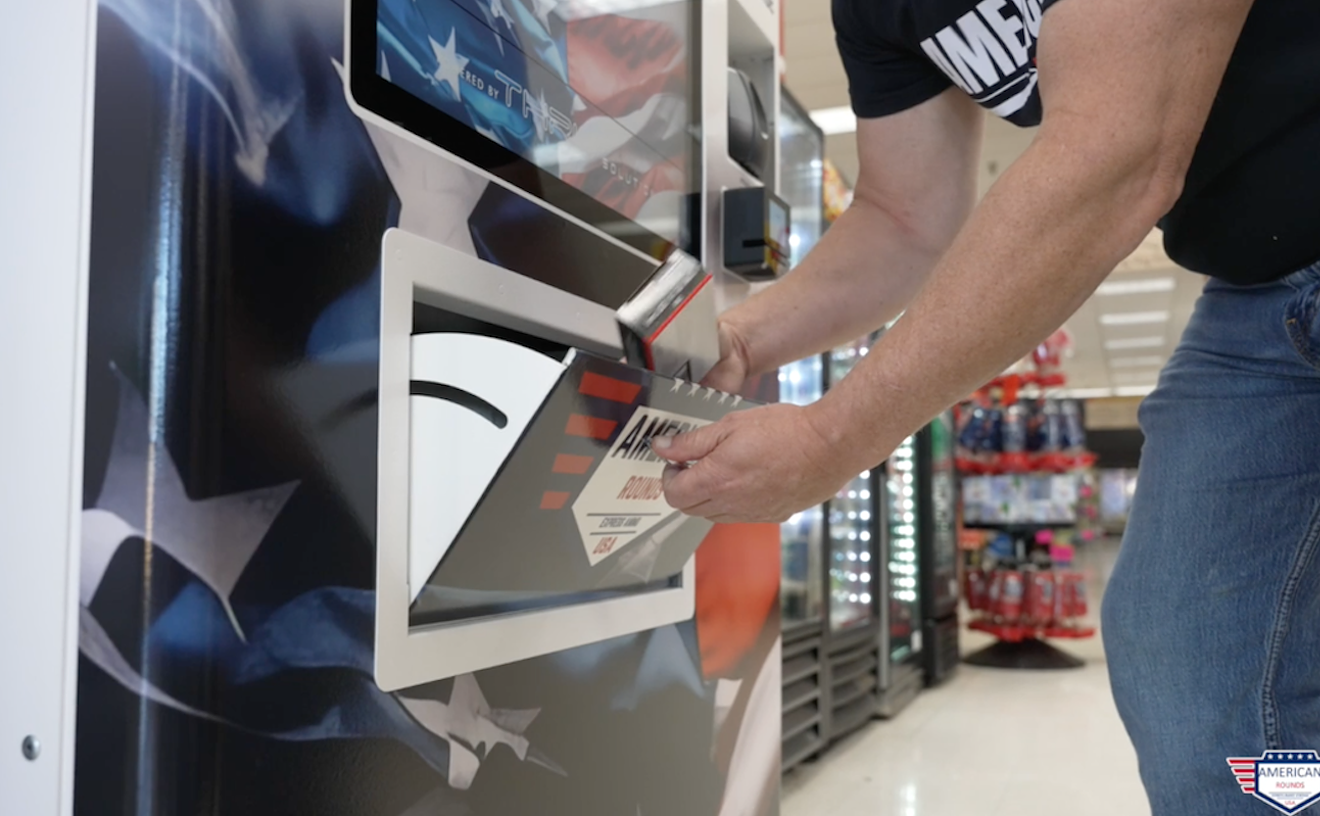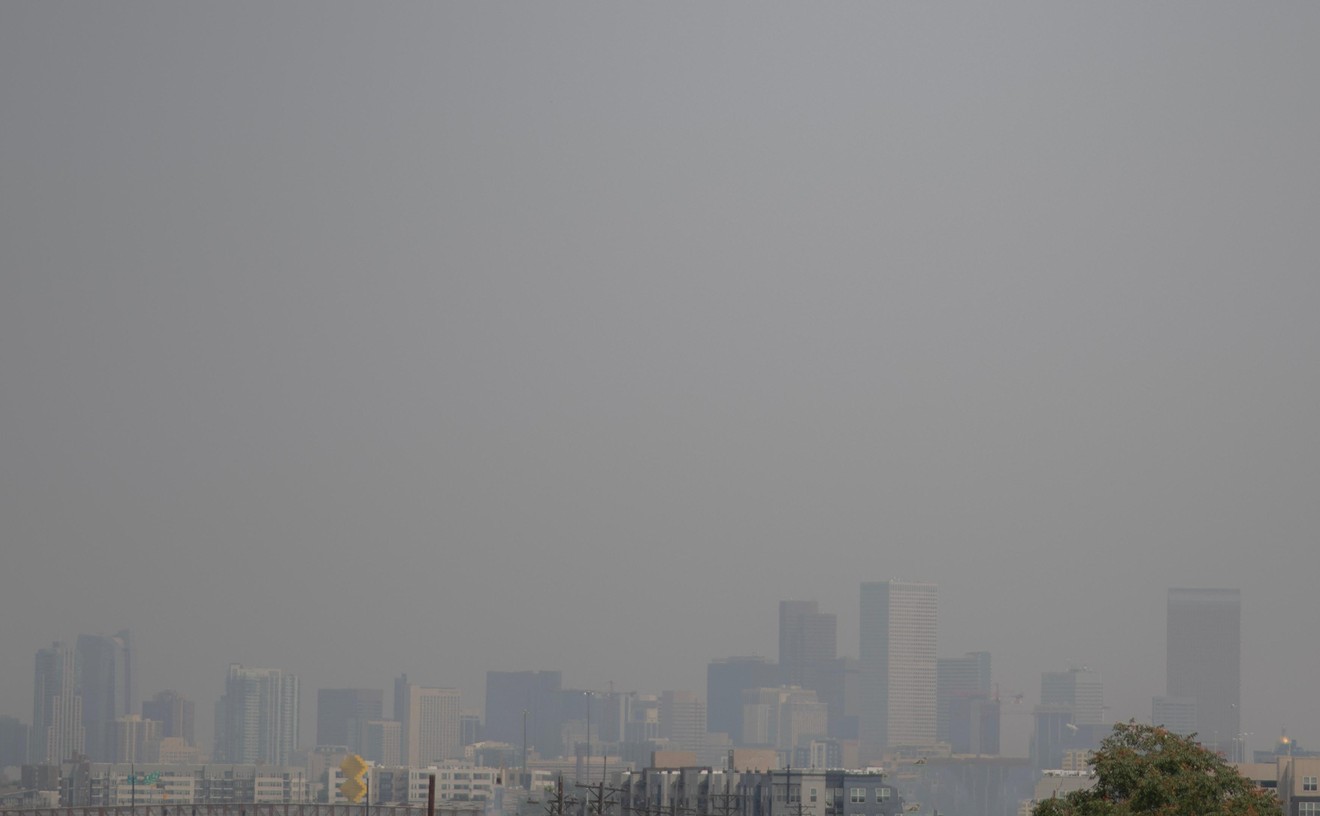"That's the only reason I'm talking about this," says Seeds, who took the photos seen in this post during his journey. "I don't want PR. I lived through it. I don't want to see somebody else die."
A native of the Philadelphia area, Seeds has lived in Denver for around ten years and is currently a sous-chef at Panzano, which Westword named the city's best Italian restaurant in 2015. But when he's not making pasta, he's often enjoying the outdoors in Colorado.
Over the past half-decade, he's specialized in surmounting fourteeners, which are ranked in terms of difficulty on 14ers.com, an indispensable web resource for anyone interested in taking on such a challenge. Here's the site's ranking definitions:
Class 1: Easy hiking — usually on a good trail."I took the last two years off" from fourteeners, Seeds notes. "But before that, I was climbing them for three years. I started out with all the easy ones, all the Class 1s, the Class 2s, and I did a ton of research. I got a subscription to Backpacker magazine and spent a lot of time on 14ers.com, and I pretty much learned all the survival skills as far as temperature, animals, everything. And I haven't stopped as far as the research goes, because every time you do a trip, there's always something new to learn. So I'd say after the first twenty or so, I did a couple Class 3s — I did Longs Peak, I did both Crestone ones, Crestone Peak and Crestone Needle. I did Humboldt, Kit Carson, Challenger Point. And then toward the tail end of the third year, I did North Maroon Peak in the Maroon Bells, Pyramid Peak, Snowmass Mountain. So I was basically at 48 when I started this trip."
Class 2: More difficult hiking that may be off-trail. You may also have to put your hands down occasionally to keep your balance. May include easy snow climbs or hiking on talus/scree.
Class 3: Scrambling or un-roped climbing. You must use your hands most of the time to hold the terrain or find your route. This may be caused by a combination of steepness and extreme terrain (large rocks or steep snow). Some Class 3 routes are better done with rope.
Class 4: Rope is often used on Class 4 routes, because falls can be fatal. The terrain is often steep and dangerous. Some routes can be done without rope because the terrain is stable.
Class 5: Technical climbing. The climbing involves the use of rope and belaying.
For each hike, "I always did my homework," Seeds stresses. "I went through each fourteener from top to bottom. I went through the routes. Every time I went on a trip, because of the fact that I don't trust technology 100 percent, I printed out color pictures of the entire route for every mountain I went on. And I also learned from all the people I met. Experienced people who'd done most of them, or all of them, and knew what they were talking about."
Likewise, Seeds always kept his limitations in mind. "I don't have any knowledge as far as ropes go," he acknowledges, "and for any of the standard routes on fourteeners, you don't need them. There's a couple, like Longs Peak, where you need ropes if you do the front side. I have a friend who's actually done the front side of that mountain; it took an entire day. And if you want to go up the north face of Capitol, you need rope, and if you want to go from North Maroon Peak to Maroon Peak, that thirty-foot climb, you need a rope. So I know where you need ropes and where you don't need ropes" — and he tries to sticks to routes where they're not needed.
But when tackling fourteeners, surprises can crop up — as they did on Capitol Peak.
Prior to targeting Capitol, "I actually tried for El Diente and Mount Wilson, which is one of the classic four traverses," he says. "But I got up to 1,000 feet of snow, and at the time of the day and the fact that I wanted to do both, I backed off. The snow was definitely six feet-plus. Just from my experience with snowboarding and snow and knowing snowpack and taking avalanche classes, you can tell how much snow roughly is there. So I backed off of that one and basically just waited for the weather. I literally waited for six weeks because of weather."
When optimal conditions arrived, Seeds targeted Capitol Peak for reasons that had nothing to do with visiting the mountain where so much tragedy has taken place this year. "That wasn't part of it at all," he maintains. "It was the last mountain in the Elk range that I had to hike. I didn't have any other hikes this summer, so I wanted to go with something that was big. And for all the research I've done, I knew Capitol was going to be the big one. I guess I've been mentally preparing myself for doing it, and with the weather conditions as perfect as they were, I figured, why not?"
When gathering supplies, Seeds displayed his usual attention to detail. In terms of clothing, "I don't wear anything cotton at all. It's all synthetic, it's all quick-dry and it's all windproof. So basically I went up there with convertible pants, so I could take them off my legs — which I never did, a T-shirt, a long-sleeved shirt, a hat and a down jacket." This last item was especially important, because "when I started out, it was, like, 40 degrees."
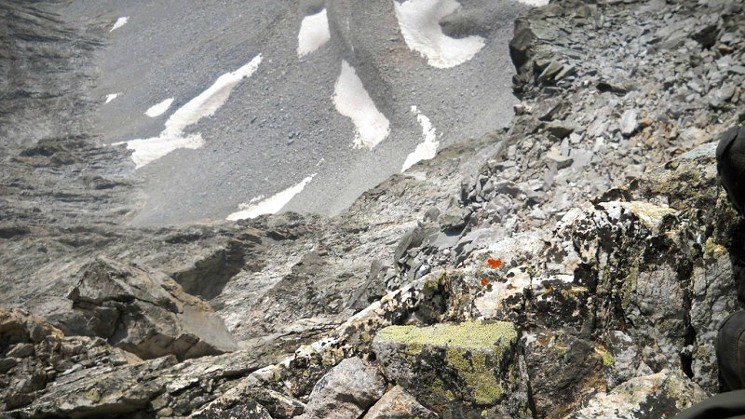
You can see the tips of Joseph Seeds's shoes to the right of the frame in this spectacular shot.
Facebook
But one item was missing: his SPOT Satellite GPS Messenger, a communication device designed for "off-the-grid messaging, emergency alerts and GPS tracking all done via satellite." On most fourteeners, "you don't get any cell service at all," Seeds points out. "But this was the one time I didn't have my SPOT with me."
He did, however, have companionship for much of his September 6 climb. "I met two people at the campsite: Bill, who was 74 years old, and Jesse, who was 26. We all said we were going up the next day, and we all left at about the same time — I left at 5:30 a.m. — so I figured that at some point we were going to meet up. And we did meet about an hour later, as I was coming up the back side. And from there, it took us about an hour to get to K2."
According to Seeds, "there are two different routes you can use to go up to the top portion of the peak. One's just a straight red line and the other one is a dotted line, but they're both possible. Bill and myself, we went up the route to the left, and Jesse went up on the right. Then, after we got over that, we had a down climb, which is basically to a ridge. Then we started across, and that put us at Knife's Edge," the name given to the spectacular stretch leading to the summit. Parker's Jeremy Shull is thought to have fallen to his death from Knife's Edge last month, but "I didn't honestly think it was that bad," Seeds says. "None of us had any problem with that."
By Seeds's estimate, he reached Capitol's summit at around 11:30 a.m. "I think we stayed up there for half an hour, and then we started back down. And getting back down was no problem — even the Knife's Edge. We got off the ridge right below K2. Bill was a little bit slow at that point, a little worn down, so he was behind me. Jesse was in front of me a good 100 feet or so."
Before long, though, things got tricky. Seeds got separated from Bill and Jesse, and when he was on his own, "I made a mistake," he says. "I wasn't lost. I just made a wrong turn. I got turned around and wasn't paying attention for a minute, and because of that, I made a bad choice. I dropped down about 700 feet and I saw the lake right in front of me, and I was like, 'That's the campsite over there. I'm on the wrong side.'"
Indeed, he was. Seeds realized he was on the north face of Capitol Peak, where most of the 2017 casualties at the location took place. After the August deaths of Aspen's Ryan Marcil and Carlin Brightwell, the Pitkin County Sheriff's Office issued a release that reads in part, "There is not an alternate route down the North Face of Capitol Peak unless you have extensive climbing experience and all the necessary ropes and gear associated with high angle mountain climbing. If there was a safe shortcut, it would be the standard route."
Upon realizing the seriousness of his dilemma, Seeds could feel himself edging toward a freakout — "but then I turned on survival mode, and I just kept going. I had to go back and forth in between gullies just to find stable rock, because I knew all about the loose rock on that front face. That was the hardest part, just maneuvering through it and figuring out, 'That rock's solid and that rock's not.'"
When it came to degree of difficulty, this patch "was a serious Class 4, and close to Class 5," he recalls. "I should have been roped in for it, but I wasn't. So I took my time, went ten feet at a time — looked for the best route and did what I needed to do to get around things. And after about two hours, I got to the bottom of K2. But I was just so physically exhausted that after I got myself to a stable area, I just said, 'Now's the time to call it in.'"
Ordinarily, Seeds would have done so using SPOT. With that gadget not available to him, he texted a friend on his cell phone to alert the local search-and-rescue team, Mountain Rescue Aspen — and somehow, the message got through. In his words, "I was lucky."
It took a while for a rescuer to reach Seeds, and when he did, "he got me out of this little section; I'd say it was fifty or 75 feet at the most. Then we talked for a bit, and he saw that I was fully prepared as far as gear and clothing — and I was about an hour from my campsite. So he initially was going to let me go. But then he communicated with the Black Hawk helicopter" containing other members of the team, "and I'm guessing that because five people have died on this mountain this year, they didn't want to take a chance. And when I had time to think about it, I was like, 'I get it.' I wasn't that upset. I was at the moment, because my backpack was still down there. But I looked at it from their point of view, and I got it. They were just watching out for my safety."
After the rescuers plucked Seeds off the mountain, "they took me down to the Aspen airport, and search-and-rescue took me to their headquarters, which is just across the street from the airport, and I told them the whole story. They were looking for information for what happens down the road. And after what they did, I couldn't say no."
Seeds praises everyone at Mountain Rescue Aspen and offers special thanks to Pitkin County Sheriff's Deputy Dustin Gray. But he also has guidance for other adventurers.
"I want to help the young, inexperienced hiker who thinks that if he can hike a lot of places on the Front Range, he can hike those mountains," he says. "But Capitol is considered the most technical and dangerous fourteener in Colorado, and you can't start there. You have to take it slow — start with the Class 1s and 2s and do a lot of them before you even think about Class 3s, let alone Class 4s and 5s."
On top of that, Seeds emphasizes, "You need to realize there may be a time when you need to call it quits and back off. For instance, after I decided to do Longs, I went up that mountain four times, and either because of the people I was with or because of the weather conditions, I backed off. It took me until the fifth time to go up it. And you have to be aware of time. You have to start early, whether it's three or four or five o'clock in the morning, and you need to be up on the summit by twelve and then get off. It doesn't matter if it's perfect weather. The weather in Colorado can change in thirty minutes. I've seen it happen; I've seen blue-sky days go to snowstorms that quickly. So you need to prepare for forty-degree nights, even in the summer. And you need to be prepared for animals. The whole Elk range is bear country, so I have bear mace, a bell and a bear canister. You have to have everything, because you never know when you'll need it."
Also key "is keeping your head, just like I did on Capitol. I got into a precarious situation, but I also kept my head together — and I got out of it. And I got another great piece of advice from an old-timer; he had to be 75 or eighty. He said, 'The biggest mistake people make when they go up these crazy peaks is they don't check back around and look at their surroundings as they're going up.' Now, I actually do that — but in that one section on Capitol, I didn't pay attention to it as much as I should have. Every other part, I was crystal clear on. But that part, I didn't pay as much attention as I should have," to his regret.
Despite the close shave, Seeds hasn't sworn off fourteeners. But he now understands that letting his thoughts drift even momentarily can lead to catastrophe, and so can forgetting his SPOT. He also suggests hiking with a partner on the more difficult mountains, and he feels some fourteeners could have better signage. "They have a good one on Maroon Bells," he remembers. "It lets you know what you're going to be facing. And when they drive you up on the bus, they tell you, 'The nickname of the Maroon Bells is the Death Bells.' That's literally what my driver said."
No, he doesn't have a death wish. Far from it. "I have a lot of fun doing this, but I'm dead serious about it, too, and I know what I'm doing. So don't lose your head. If you panic, panic will kill you. Keep your head focused and do what you've got to do — and live to hike another day."

